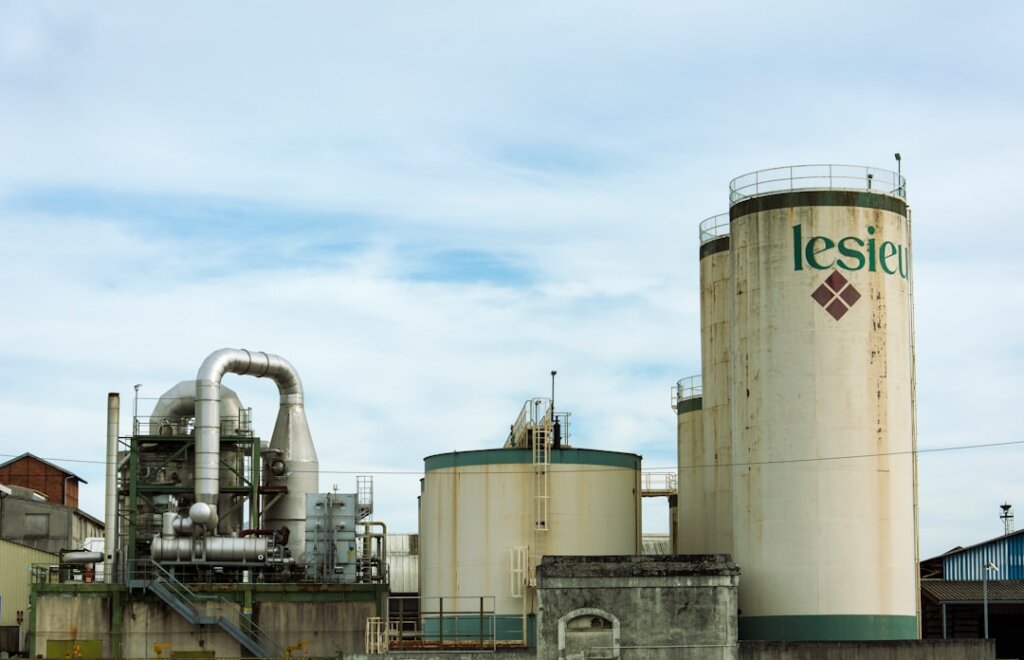Hydrogen peroxide, a simple yet powerful chemical compound, has garnered significant attention in various industries due to its versatile properties. Composed of two hydrogen atoms and two oxygen atoms, this pale blue liquid is often recognized for its strong oxidizing capabilities. You may have encountered hydrogen peroxide in your household, typically in a brown bottle labeled as a disinfectant or antiseptic.
However, its applications extend far beyond the confines of your medicine cabinet. In fact, hydrogen peroxide is a crucial player in numerous industrial processes, where it serves as an eco-friendly alternative to more hazardous chemicals. The significance of hydrogen peroxide lies in its ability to decompose into water and oxygen, making it an environmentally friendly option for many applications.
This characteristic not only reduces the risk of harmful residues but also aligns with the growing demand for sustainable practices across various sectors. As industries increasingly seek greener solutions, hydrogen peroxide stands out as a viable choice, offering both efficacy and safety. In the following sections, you will explore the diverse applications of hydrogen peroxide, from water treatment to textile manufacturing, and understand why it has become an indispensable tool in modern industrial processes.
Key Takeaways
- Hydrogen peroxide is a chemical compound with the formula H2O2, commonly used as a bleaching agent, disinfectant, and oxidizer.
- In water treatment, hydrogen peroxide is used to remove organic and inorganic impurities, control odors, and disinfect water.
- The paper and pulp industry utilizes hydrogen peroxide for bleaching pulp, reducing environmental impact, and improving paper quality.
- Industrial cleaning and disinfection benefit from hydrogen peroxide’s ability to kill bacteria, viruses, and mold without leaving harmful residues.
- In the textile industry, hydrogen peroxide is used for bleaching and dyeing processes, as well as for removing impurities from fabrics.
- Safety measures for handling hydrogen peroxide in industrial applications include proper storage, ventilation, personal protective equipment, and adherence to handling guidelines to prevent accidents and exposure.
Use of Hydrogen Peroxide in Water Treatment
Introduction to Hydrogen Peroxide in Water Treatment
In the realm of water treatment, hydrogen peroxide plays a pivotal role in ensuring the safety and quality of water supplies. Its strong oxidizing properties make it effective in breaking down organic contaminants and removing harmful substances from water sources. When you consider the importance of clean water for both human consumption and environmental health, the role of hydrogen peroxide becomes even more critical.
Applications of Hydrogen Peroxide in Water Treatment
It is often used in advanced oxidation processes (AOPs), where it reacts with other chemicals to produce hydroxyl radicals that can effectively degrade pollutants. Moreover, hydrogen peroxide is particularly valuable in treating wastewater. As industries discharge effluents containing various contaminants, the need for effective treatment methods becomes paramount.
Benefits of Using Hydrogen Peroxide
By utilizing hydrogen peroxide, facilities can significantly reduce the levels of toxic substances, including phenols and chlorinated compounds. This not only helps in meeting regulatory standards but also contributes to the overall sustainability of water resources. The use of hydrogen peroxide in water treatment has numerous benefits, making it a crucial component in the preservation of water quality.
Conclusion on the Importance of Hydrogen Peroxide
As you delve deeper into the world of water treatment, you will find that hydrogen peroxide is not just a chemical; it is a vital component in preserving the integrity of our water systems. Its effectiveness in removing contaminants and its role in advanced oxidation processes make it an essential tool in the pursuit of clean and safe water for human consumption and environmental health.
Hydrogen Peroxide in the Paper and Pulp Industry
The paper and pulp industry has long relied on hydrogen peroxide for its bleaching processes. Traditionally, chlorine-based bleaching agents were used, but concerns over environmental impact and health risks have led to a shift towards more sustainable alternatives. Hydrogen peroxide has emerged as a preferred choice due to its effectiveness in brightening paper products without introducing harmful byproducts.
When you think about the vast amounts of paper consumed daily, the importance of eco-friendly bleaching methods becomes evident. In addition to its bleaching capabilities, hydrogen peroxide also aids in the delignification process, which involves removing lignin from wood fibers to produce high-quality pulp. This process is essential for achieving the desired strength and brightness in paper products.
By using hydrogen peroxide, manufacturers can enhance the quality of their output while minimizing their ecological footprint. As you explore the intricacies of the paper and pulp industry, you will appreciate how hydrogen peroxide not only improves product quality but also aligns with the industry’s shift towards sustainability.
Industrial Cleaning and Disinfection with Hydrogen Peroxide
In industrial settings, maintaining cleanliness and hygiene is paramount for operational efficiency and safety. Hydrogen peroxide has gained popularity as a powerful cleaning and disinfecting agent due to its broad-spectrum antimicrobial properties. When you consider the potential for contamination in manufacturing environments, the ability of hydrogen peroxide to eliminate bacteria, viruses, and fungi becomes invaluable.
It is often used in food processing plants, healthcare facilities, and laboratories where stringent hygiene standards must be upheld. One of the key advantages of using hydrogen peroxide for cleaning is its rapid decomposition into harmless byproducts—water and oxygen—after it has served its purpose. This characteristic not only makes it safe for use in sensitive environments but also reduces the risk of chemical buildup that can occur with traditional cleaning agents.
As you navigate through various industrial cleaning applications, you will find that hydrogen peroxide offers an effective solution that meets both cleanliness standards and environmental considerations.
Hydrogen Peroxide in the Textile Industry
The textile industry has also embraced hydrogen peroxide for its bleaching and finishing processes. As consumers become more conscious of the environmental impact of their clothing choices, manufacturers are under pressure to adopt sustainable practices. Hydrogen peroxide serves as an effective bleaching agent that can lighten fabrics without the harmful effects associated with chlorine-based alternatives.
When you consider the vast array of textiles produced globally, the shift towards using hydrogen peroxide represents a significant step towards greener manufacturing practices. In addition to bleaching, hydrogen peroxide is utilized in various finishing treatments to enhance fabric properties such as strength and durability. Its ability to remove impurities from fibers ensures that textiles meet quality standards while minimizing environmental harm.
As you explore the textile industry further, you will recognize that hydrogen peroxide not only contributes to product quality but also aligns with consumer demands for sustainable fashion.
Safety and Handling of Hydrogen Peroxide in Industrial Applications
While hydrogen peroxide offers numerous benefits across various industries, it is essential to recognize that it must be handled with care due to its reactive nature. In industrial applications, safety protocols are crucial to prevent accidents and ensure proper usage. When working with concentrated solutions of hydrogen peroxide, personal protective equipment (PPE) such as gloves, goggles, and face shields should always be worn to minimize exposure risks.
Additionally, proper ventilation is necessary when using hydrogen peroxide in enclosed spaces to avoid inhalation of vapors. Storage practices are equally important when it comes to handling hydrogen peroxide safely. It should be stored in cool, dark places away from direct sunlight and incompatible materials such as organic substances or strong acids.
By adhering to these safety guidelines, you can mitigate potential hazards associated with hydrogen peroxide while reaping its benefits across various industrial applications. As you engage with this powerful compound, understanding its properties and safety measures will empower you to utilize it effectively while prioritizing safety in your workplace. In conclusion, hydrogen peroxide stands out as a versatile chemical compound with a wide range of applications across multiple industries.
From water treatment to textile manufacturing, its effectiveness as an oxidizing agent makes it an invaluable resource for achieving sustainability goals while maintaining high standards of quality and safety. As industries continue to evolve towards greener practices, hydrogen peroxide will undoubtedly play a crucial role in shaping a more sustainable future. By understanding its diverse applications and adhering to safety protocols, you can harness the power of hydrogen peroxide responsibly and effectively in your industrial endeavors.
One related article to Industrial Applications for hydrogen peroxide is “Using Hydrogen Peroxide to Clean Your Refrigerator.” This article provides tips and guidelines on how to effectively clean and sanitize refrigerators using hydrogen peroxide. It discusses the benefits of using hydrogen peroxide as a cleaning agent and provides step-by-step instructions on how to properly clean and disinfect refrigerators. For more information, you can visit here.
FAQs
What are some common industrial applications for hydrogen peroxide?
Some common industrial applications for hydrogen peroxide include bleaching textiles and paper, treating wastewater, and as a disinfectant in the food and beverage industry.
How is hydrogen peroxide used in bleaching textiles and paper?
Hydrogen peroxide is used as a bleaching agent in the textile and paper industries to remove color from the fibers, resulting in a brighter and whiter finished product.
What role does hydrogen peroxide play in treating wastewater?
Hydrogen peroxide is used in wastewater treatment to oxidize and break down organic and inorganic pollutants, helping to purify the water before it is released back into the environment.
How is hydrogen peroxide used as a disinfectant in the food and beverage industry?
In the food and beverage industry, hydrogen peroxide is used as a disinfectant to sanitize equipment, surfaces, and packaging to ensure the safety and quality of the products.
Are there any other industrial applications for hydrogen peroxide?
In addition to the aforementioned applications, hydrogen peroxide is also used in the production of chemicals, as a cleaning agent in the electronics industry, and in the treatment of air and gas emissions.



